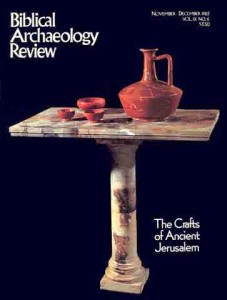Jerusalem in Flames—The Burnt House Captures a Moment in Time

We came upon it suddenly, in the very first year of our excavations. At that time we had not yet excavated a single house that had witnessed the catastrophe of 70 A.D., when the Romans destroyed Jerusalem. We were still emotionally unprepared for the impressions and associations raised by the prospect before us. In subsequent years, after several other burnt houses had been discovered, our emotions became somewhat blunted to the sight of such stark violence. But not only was this Burnt House the first such discovery, its preservation of traces of destruction and fire and the quantity of objects found in it were never exceeded. In January 1970, after heaps of rubble and refuse had been cleared away, we removed a rather thick layer of fill and refuse containing nothing ancient. Then stone walls suddenly began sprouting out of the earth. We saw immediately that these were the walls of rooms. As a first step in stratigraphic excavation, we dug a trench the breadth of one of the rooms, in order to determine the sequence of the layers. At a depth of about a meter, we encountered a floor of beaten earth. Already, the sides of the trench were providing a clear and impressive cross section, which we were able to read like an open book.
Already a library member? Log in here.
Institution user? Log in with your IP address.

